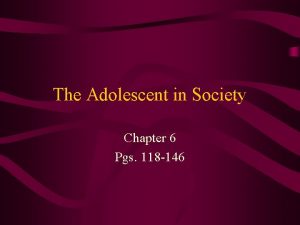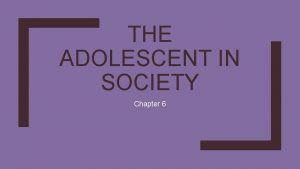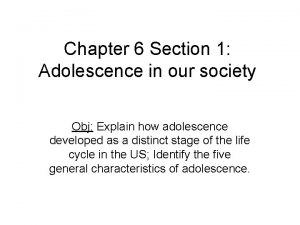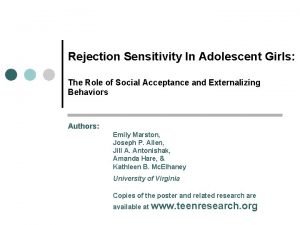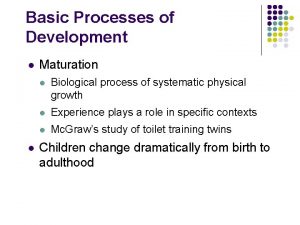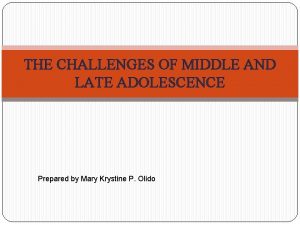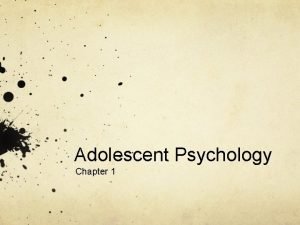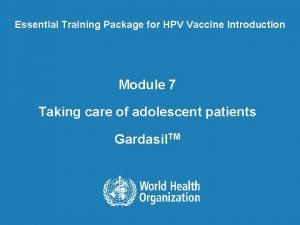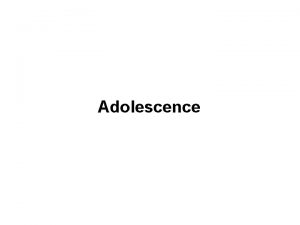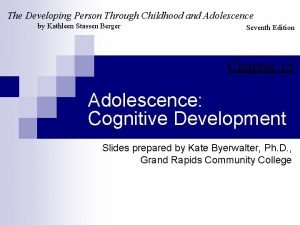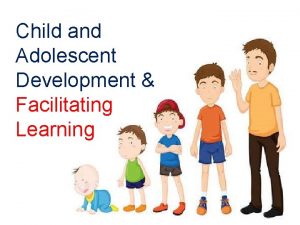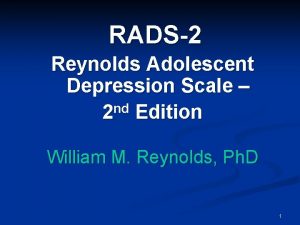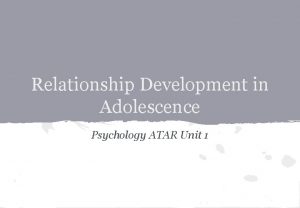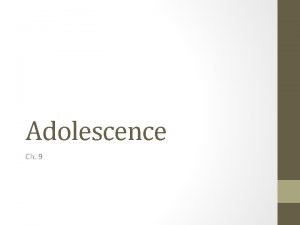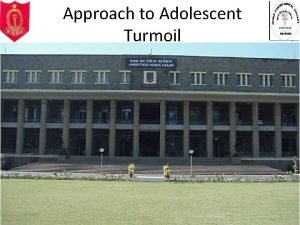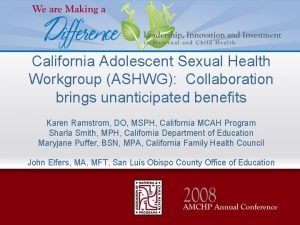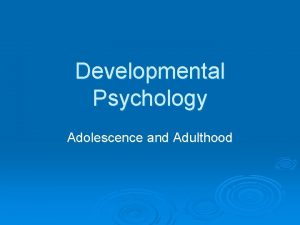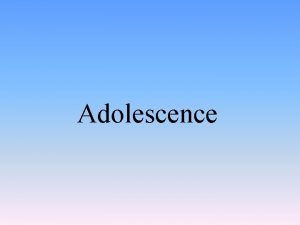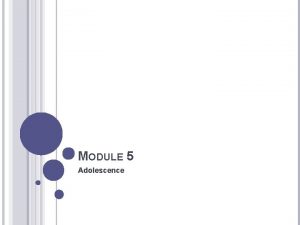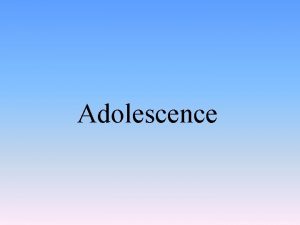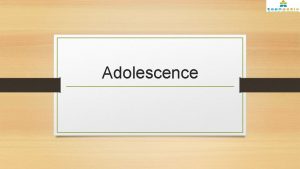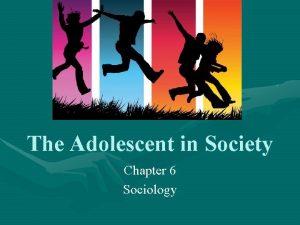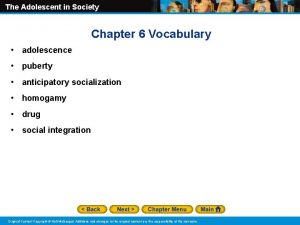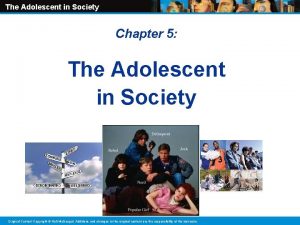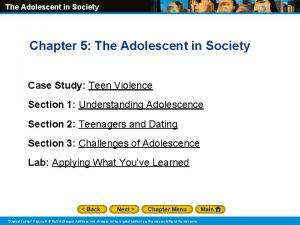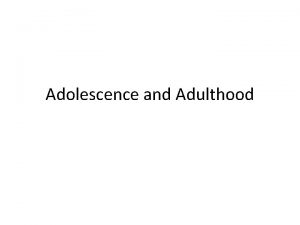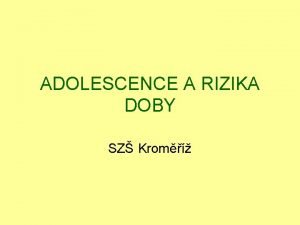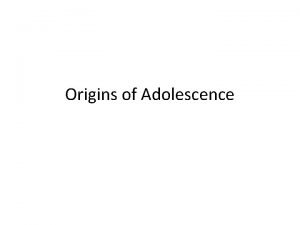The Adolescent in Society Adolescence in Society Standards
























- Slides: 24

The Adolescent in Society “Adolescence in Society” Standards: 4. 1, 4. 2, 4. 3, 4. 4, 4. 11, 5. 4 SOCIOLOGY: CHAPTER 6

Adolescence Agenda Intro to… Peers and Cliques Mean Girls Groups Socialization Norms Peers

Think about it. What causes parent-adolescent conflict? Use your own lives as examples! Come up with some reasons parents and adolescents conflict. In other words, why do parents fight with their teenagers?

Define Adolescence Training period for adulthood Length of adolescence directly relates to the complexity of the society Why do you think this fact is true?

Answer the following questions… 1. What are the biggest fears of adolescents today? What about 50 years ago? Give some examples of each! 2. What do you think life would be like in America without adolescence? What if adulthood started at age 13? 3. Come up with at least three factors that put adolescence in a distinct stage of life.

3 Factors Mandatory Education Not simple to drop out of school Parental expectations Career choices (typically need more education but is this true right now? )

Exclusion from Labor Force Can not work until 16 years old Economic dependence of their parents ○ Credit cards ○ Cell phones ○ Vehicles Juvenile Justice System Separate system from that of adults Can be tried as a “minor” until you are 18 years old

Adolescence in Society Concept of Adolescence: Present creation: Creation of Industrial Society Adolescence: Period between normal onset of Puberty and beginning of adulthood Puberty: Physical maturing that makes someone capable of reproduction *Ages 13 to 21 This age range has changed – many college kids move back home after school – drawn out adolescence

Has become phenomenon in past 4050 years Consistently studied by marketing and advertising companies Brands and items for adolescents (specifically) ○ Abercrombie & Fitch ○ Affliction ○ American Eagle ○ Jersey Shore (All of MTV) ○ Facebook and Twitter

What causes parentadolescent conflicts? up with! Clothes Dating Priorities Work Friends (sketchy) Money Grades Fights with Siblings Is this what you came Coming home late Back Talk Trust Attitude Drugs/Alcohol Car

Why is there so much parent-adolescent conflict in contemporary western civilization?

Rapid Social Change Most prevalent in Western Societies Parents are considered “old” when they become parents Parents feel uninformed – weakens their power Ex: smart phones, Twitter, Facebook

Slow Down in Learning Older you get, more set in your ways Harder to change your parents views Youth is still fluid (changing) Youth has always challenged the stability of old ways Ex: counterculture of the hippies

Physiological & Psychological Differences between Parent and Child Physical – different ages Youth – lots of energy, fearless Parents – settled, conserve energy Psychological Adults are realists Kids are still idealists

5 General Characteristics of Adolescence 1. Biological Growth (80% develop Acne) 2. Undefined Status (not a child; not an adult Read p. 122 “Blurring of Adolescence”) 3. Increased decision making -- College, kids getting more freedom 4. Increased Pressure (Peers vs. Parents – who has more influence? What do you think? )

5. Search for Self (Prepare for future) Who am I… Really? What is important to “me? ” Anticipatory Socialization: Learning rights, obligations, and expectations of a role in preparing for assuming that role at a future date Dating, Part-time job, and school Culture can also have a huge impact

Societies with no concept of adolescence Ndembu of Zambia Go straight from childhood to adulthood Puberty Rite: ceremonies that mark the transition from childhood to adulthood Demonstrations of Strength Filing of the Teeth Tattooing of skin Age 13/14: Can marry

“Teenagers and Dating” SOCIOLOGY: CHAPTER 6 -2

Teenagers and Dating Well known in U. S. Not a universal phenomenon Ex: Arranged marriages ***Very recent phenomenon (Post WWI) Pre-Dating in the U. S. Courtship: Express purpose is eventual marriage very formal and structured supervised by adults 100% of the time Past: Marriage: Timed age at which a man acquired property necessary to support family

Industrial Revolution Casual Dating emerged at the same time as the Industrial Revolution People move to city Child Labor Laws Free Public Education Technology: Telephone (today = cell phones and texting) *Young people had more time and were put into situations where they began to come into contact with other young people of the opposite sex (no longer agriculture society where time working was on the farm)

Why Date? Homogamy: Tendency for individuals to marry people who have social characteristics similar to their own Willard Waller: Dating was a form of recreation that has little to do with mate selection, more of a social gathering, research at PSU

1. Mate selection --Why do we select the partners that we do? 2. Recreation: (Waller) --Who dates for the fun of it? Why would you want a serious relationship at 16 -17 -18 yrs old? 3. Mechanism of Socialization 4. Psychological Needs Conversation, Companionship, Understanding ******Attain Status*****

Dating Patterns Traditional: Responsibility fell to male (Ask parents; Money) Ritualized Structured rules Set Activities (Movies…etc) Began Casually Moves to “Going Steady” Early on, men were commended for being chivalrous. Why is this not the case anymore?

Dating Patterns Contemporary: Present Teenagers more spontaneous Male and female initiate dates Relationships based on “group” Exception: Court at 16: Boys 14 Girls No Amish divorces yet Read p. 133: “Themes in Popular Songs”
 The adolescent in society guided reading section 2
The adolescent in society guided reading section 2 Undefined status adolescence
Undefined status adolescence Importance of adolescence
Importance of adolescence Adolescence in our society
Adolescence in our society Adolescence is a period of
Adolescence is a period of Prevention of anemia in adolescent girl
Prevention of anemia in adolescent girl Adolescent egocentrism
Adolescent egocentrism Module 4 the challenges of middle and late adolescence
Module 4 the challenges of middle and late adolescence Adolescent generalization gap
Adolescent generalization gap Erikson stage
Erikson stage Adolescent definition
Adolescent definition Physical development in adolescence
Physical development in adolescence The developing person through childhood and adolescence
The developing person through childhood and adolescence Scaffold and fade-away technique
Scaffold and fade-away technique Pmdd
Pmdd Adolescent family violence program
Adolescent family violence program Dunphy's 5 stages
Dunphy's 5 stages Erikson's stage of adolescence
Erikson's stage of adolescence Trust vs mistrust stage
Trust vs mistrust stage Tableau de motivation adolescent
Tableau de motivation adolescent Urbanův figurální test tvořivého myšlení
Urbanův figurální test tvořivého myšlení Discontinuity of development
Discontinuity of development The art and science of helping adults learn
The art and science of helping adults learn Adolescent turmoil definition
Adolescent turmoil definition Adolescent health working group
Adolescent health working group

